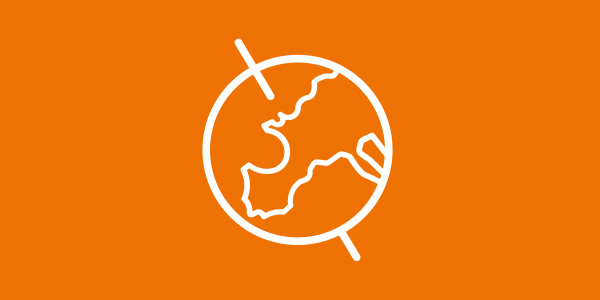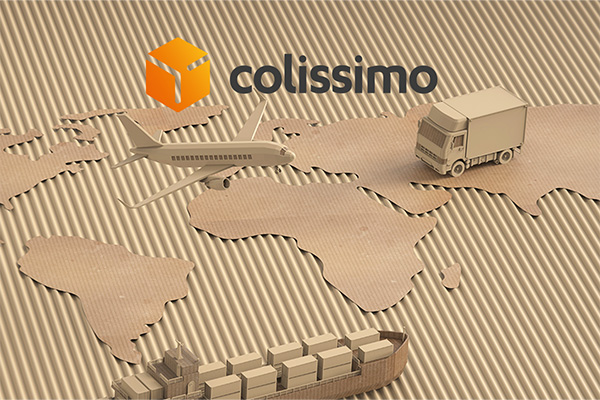Launching and developing your e-commerce internationally: it's not rocket science if you have the right support!
76%(1) of French websites anticipate an increase in their share of international sales within the next 2 years - why shouldn't you?
In this article, we're going to guide you through the key stages in launching your e-commerce business internationally, starting with Europe. Get ready to explore new markets, increase your revenues and reach new heights!

Assessing market opportunities
Before you get started, the first - and most important - question to answer is whether there is commercial potential for your products and services.
The first tip to help you find out if there is an appetite is to look at the visitors to your site. What is the geographical origin of Internet users interested in your offer? To find out, the most common (and certainly the most popular) tool is Google Analytics. There are other solutions, such as AT Internet or IBM Digital Analytics. This will give you an idea of the country or countries in which you are developing.
To understand the contours of your target market, market research and consumer panels are essential: political and economic framework, market size, administrative and legal constraints... Everything is covered, including consumer and purchasing habits. Depending on the country, certain products or offers may not be of interest to consumers, or may even be banned. One example: to be marketed in China, a cosmetic product must have been tested on animals, which is a no-no in Europe...
Local customs services can provide all the information you need to check the regulations in force. BpiFrance (Banque Publique d'Investissement) and Business France also offer schemes to help e-tailers export, thanks to their knowledge of the markets, their international network, as well as funding assistance and regulatory expertise.
Analysing the competition
You need to position yourself against your competitors in their own market, and analyse the keys to their success. There are a few simple tools you can use to dissect online strategies. First of all, you can analyse website traffic and the way in which your competitors are reaching their targets, using SimilarWeb or SEMRush: SEO, SEA SEM, emailing, etc. The communication strategy also enables you to see which channel is effective: should you have a blog or focus all your efforts on social networks? A tool like Mention gives a detailed picture of the community targeted by your competitors, while measuring their influence.
As with opening a physical shop, you'll need to analyse the prices charged so that you can offer your international e-buyers the right price. What's at stake? Attracting them and, above all, building their loyalty. This is especially true in the case of e-commerce: building loyalty is more difficult because there is no physical contact with your customers. Tools such as Pricing Lab and Optimus Price allow you to monitor the prices charged by your competitors, helping you to adjust yours.
Should you use a marketplace or not?
How do you choose your sales channels? Is a marketplace a direct competitor to your online shop or a growth lever? It all depends on the habits of e-shoppers. In the United States, Amazon is the site most used by online shoppers. In China, Alibaba with its marketplace Tmall is the undisputed leader, and in Japan, Rakuten.
The main advantages of marketplaces: selling larger volumes and saving money.
Negative point: competition is much tougher and it can be difficult to stand out from the crowd. If you have a long range of products, the marketplace may be a good place to start, testing the market on a limited number of items. You can also benefit from à la carte services on certain marketplaces, such as Amazon and Ebay: certain stages are the contractual responsibility of the marketplaces, while other operational or logistical processes remain under the control of the e-retailer.
On the other hand, if you provide an exclusive service or product, it is more interesting to approach the market via your own site, in order to maintain a high level of personalisation and customer relations. You will need to adapt your site to your target countries, which means adapting your offer, your overall sales proposition, and therefore your services.
- If you want to offer an online shop dedicated to a specific market, you can adopt a local domain name. If you want to open up your site more widely, a '.com' extension is more appropriate.
- Developing in a market that is not your native market requires expertise in search engine optimisation, and therefore an agency specialising in SEO and/or SEA strategy.
- To improve personalisation and therefore the e-buyer experience, you will need to (re)work your cookies.
Comply with local regulations

The General Data Protection Regulation (GDPR) came into force on 25 May 2018 for all European e-tailers. It aims to protect internet users' personal data: photos, name, address, social or cultural profile, location data, health data, ID card number, online identifiers, etc.
In the case of online sales, consumers have the right to withdraw from the contract within 14 days of taking possession of the goods or accepting the offer of a service, without penalty.
Europeans use these rules very differently. Entering the UK or German market requires a reliable and responsive customer service, because consumers do not hesitate to return products, ask for refunds and demand guarantees.

Within the European Union, there are no customs formalities (with the exception of certain territories, such as the Canary Islands or the Vatican, which are subject to specific taxation). Outside the European Union and overseas territories, customs formalities and taxes apply. These formalities and taxes vary from one country to another, and may add to the price charged in France, transport costs, etc.
For all the information you need, go to « Customs formalities »
Which country to start with ?

Cross-border e-commerce opens the door to a wider potential market
Europe and cross-border countries, of course!
Cross-border e-commerce opens the door to a wider potential market. According to a study by Shopify, cross-border online purchases generate 36% of traffic for French online retailers and 23% of their sales.
This represents a significant opportunity for e-tailers to reach new customers.
As well as expanding the market, cross-border e-commerce offers increased revenue and growth opportunities. PayPal research has revealed that businesses that engage in cross-border commerce grow 60%(2) faster than those that focus solely on their home market.
How do I manage deliveries to my foreign customers?
When it comes to logistics, choose a reliable delivery partner with a local presence or with a network of local partners who are experts in their market. Choose delivery solutions that offer several delivery methods and different services to meet recipients' requirements and enhance their end-to-end shopping experience. Each country has its own specific characteristics. Find out more about the main European destinations.
Do you need support?
Colissimo and ESW have joined forces to help you.

Colissimo's international offering is simple and comprehensive. It allows you to send your goods securely to your home address or to a collection point* and to offer a Returns solution* as well as a range of services* for your foreign e-buyers (tracking, notifications, proof of delivery, integration of customs charges thanks to the FTD/DDP option).
Access over 220 destinations thanks to our membership of the UPU (Universal Postal Union) and our network of partners.
Consult our country fact sheets to find out about the specific features of the country in which you want to send your mail.
*available depending on destination

ESW (ex. eShopWorld)
As a specialist in international e-commerce, ESW is here to support you and facilitate your global expansion on several levels.
Thanks to them you will have access to :
- New international markets by overcoming language, cultural and regulatory barriers.
- A fluid, personalised shopping experience for your customers, by adapting the website, currencies and payment options to suit local habits.
- Optimise shipping costs, taxes and customs duties, thanks to the ESW x Colissimo partnership, to maximise your profitability.
- Improve your conversion rates by offering flexible and transparent delivery options.
- High-quality, multilingual customer service to support your international customers.
Sources :
1. Baromètre Fevad/ LSA/Opinionway de mars 2023, 2. PayPal, 3. Baromètre eshopper 2022 DPD

Interested ?
Contact a Colissimo sales representative and they'll put you in touch!
This content may be of interest to you

Learn more >

Learn more >

Learn more >







